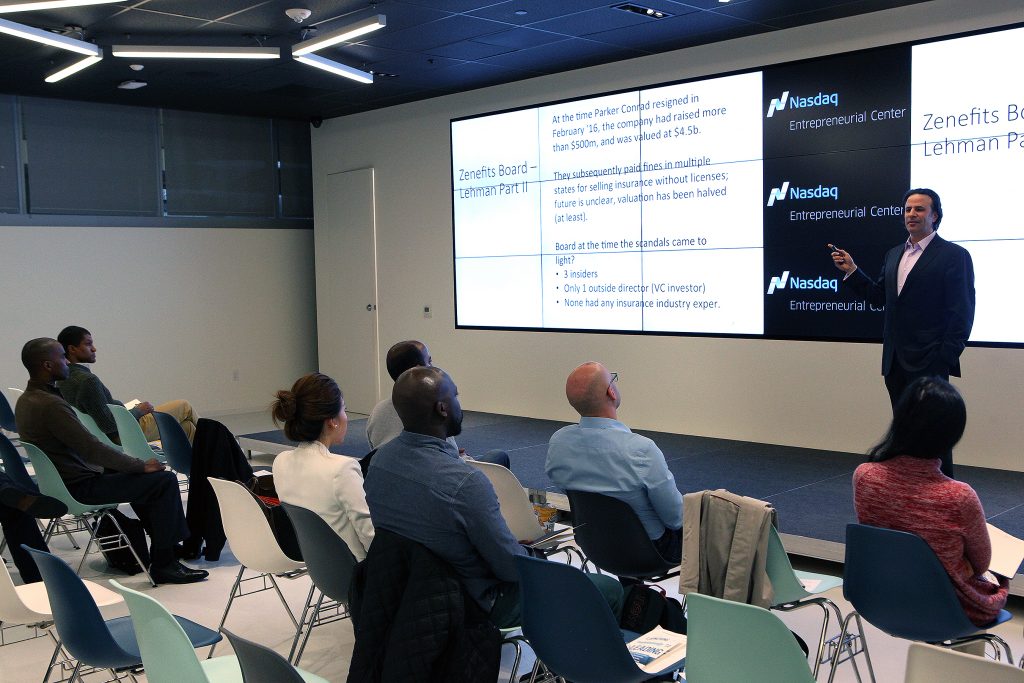The media principally cover two segments of the capital markets: the S&P 500 and hotly anticipated initial public offerings (IPOs). So, are U.S. public companies either global titans or venture-backed stars? Hardly. There are some 15,000 public companies in the United States, and most of them are small. Look at Nasdaq and the NYSE: almost half of the listed companies have market capitalizations below $300 million. More important, most public companies are ignored by the business press.
The small-cap financing marketplace is oftentimes larger than the IPO market, and the overwhelming majority of corporate board members serve small-cap companies. In addition, 73 percent of shareholder activist campaigns waged in 2015 were targeted at small-cap companies.
In light of this, it’s anomalous that most public companies are ignored by the business press. But considering how pejorative the reporting can be when the subject of small-cap companies crops up, no coverage at all seems preferable. Consider two common themes in business reporting.
■ Corporate finance. Most public companies are financed by direct investments from hedge funds in transactions that are similar to how private companies are funded by venture capitalists. When those investments are negotiated privately (as opposed to public stock offerings), they are called private investments in public equity (PIPEs). When cultural icons such as Oprah Winfrey make such investments, these financings are heralded by mainstream business media as skillful, creative, and strategic, and are rarely referred to as PIPEs. When Winfrey recently invested $43 million in Weight Watchers, the company’s stock soared 92 percent.
When reports on the multibillion-dollar small-cap financing market surface, these financings are serially labeled “shady” or “last-gasp capital” for “pump-and-dump penny stocks.” When diminutive Plug Power undertook a privately negotiated $58 million financing with a hedge fund, The New York Times commented that PIPEs are often a “last-ditch financing method.” Corporate finance writers ignore the fact that a PIPE is a PIPE whether it’s transacted by Oprah or ABC Capital Management.
■ Capital markets legislation. A recent piece in The Wall Street Journal about a bill to enhance capital markets access for microcap companies had more than a half-dozen references to fraud, penny stocks, market manipulation, and swindlers. While there is certainly fraud in the small-cap ecosystem, Fortune 100 companies pay billions of dollars in fines annually for all kinds of regulatory transgressions (e.g., JPMorgan Chase has paid more than $25 billion in fines since the Madoff crisis). Why aren’t investors reminded of that in every story about large-cap companies?
Ignoring or disparaging small-cap companies and the issues they face hurts small-cap boards and investors because there is a yawning disconnect between what most public company directors deal with on a daily basis and what is principally written about by the business media. For example, most public company directors don’t care at all about proxy advisors because most public company stocks are predominantly retail-held. The overwhelming majority of public company directors, however, care plenty about managing risk on shoestring budgets, but there are never constructive pieces written about that.
Here’s a respectful request to leading U.S. business media: it’s time to start treating small public companies for what they are—creators of countless American jobs, sources of life-changing innovation, and smaller versions of large public companies.
To wit, in 1971, yet another micro-cap stock run by “hooligans” went public with a market capitalization of just $58 million. That company was called Intel.
This post was originally featured in Directorship Magazine, November/December 2016.
________________
Save



